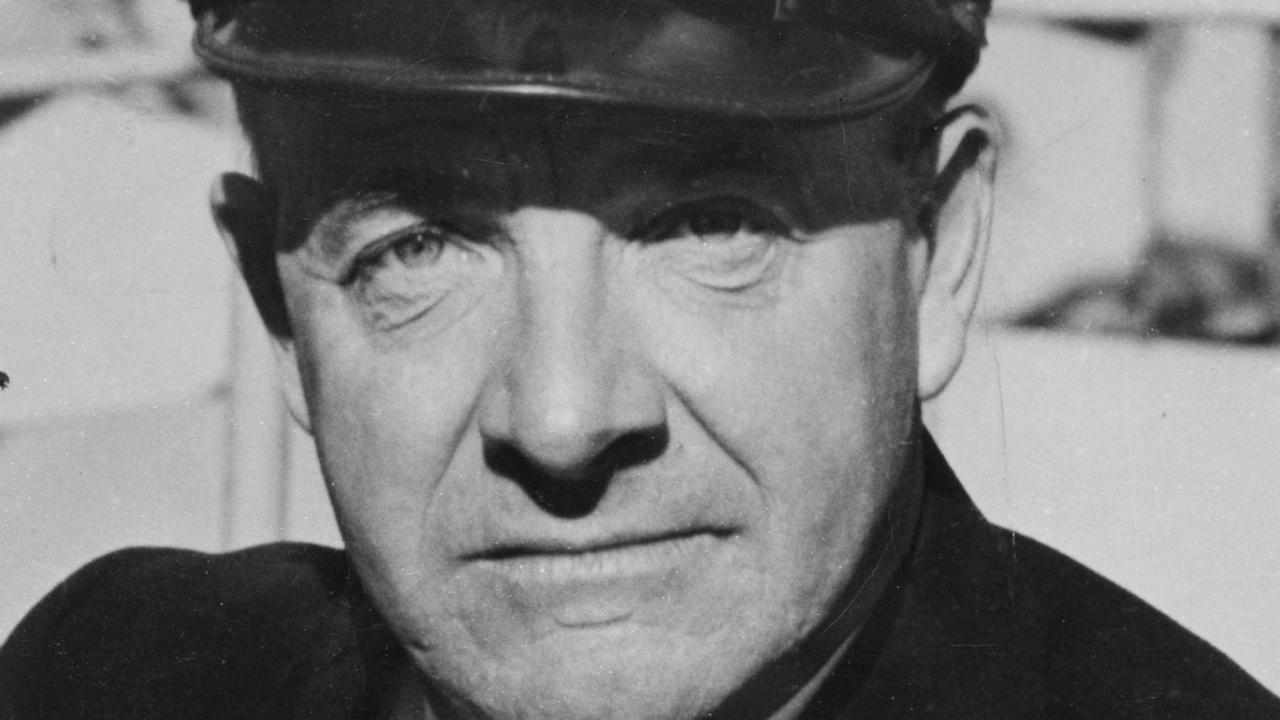Fate of Titanic-like luxury ship Koombana remains a ‘mystery of the sea’
THE discovery of a panelled door in April 1912 confirmed fears that the SS Koombana was victim of a wild tropical “willy-willy” that hit on March 20, 1912. The tragedy left no survivors and the site of the wreck of the elegant steamer has never been found.

Today in History
Don't miss out on the headlines from Today in History. Followed categories will be added to My News.
THE discovery of a panelled door, painted white on one side and polished on the other, with fittings of crossed flags labelled Walker and Hall and ornamented with a Grecian urn, devastated Australia’s remote northwest in April 1912.
The find off isolated Bedout Island, northeast of Port Hedland, confirmed fears that the SS Koombana, with its 80 passengers and 74 crew, was victim of a wild tropical “willy-willy” that hit on March 20, 1912. The tragedy left no survivors and the site of the wreck of the elegant Glasgow-built steamer has never been found.
Already the subject of Koombana Days, a non-fiction book by Perth civil engineer and historian Annie Boyd, the tragedy is now the subject of Jewel Sea, a novel by NSW author Kim Kelly, to be released on Saturday. Kelly also expects another search for wreckage from the Koombana before the end of the year.
At least another 15 people died in other ships and a “host of white people drowned at Balla Balla”, near Karratha, as the cyclone raged for three days, forcing 40 pearl luggers into shelter off Port Hedland.
Among doomed Koombana passengers were 22 shearers, all heading to one station, and “one Aboriginal and one Malay prisoner”, both unidentified. Tom Crotty, aged about 11, was sailing with his grandmother Louise Sack, who managed the Port Hotel at Derby with husband Daniel. It is believed Sack, one of 10 women on board, was returning from visiting Perth, where her daughter Evelyn McGovern had just given birth to twins, Ruby and Pearl.
A mother of nine, Sack was matriarch of a family known to author Mary Durack, whose book of Kimberley pioneers Sons In The Saddle, noted the region was “the land of blacks, Sacks and Duracks”. A granddaughter noted Sack “was Mother of all the Sacks in the country at the time”.

Also on board was affluent Broome pearl trader Abraham de Vahl Davis, partner and manager
of a pearl fleet with his brother-in-law Mark Rubin. Rubin, a former haberdasher and opal miner who left a £53,946 estate when he died in Britain in 1919, was remembered for a lavish party he gave aboard SS Paroo at Broome in 1906. Davis sank part of his pearl fortune into lavish parties at his stylish bungalow overlooking Broome’s Roebuck Bay.
Months earlier Davis, 48, had endured a widely publicised and embarrassing divorce hearing that revealed his long-absent wife Sarah, mother of their two children, had been engaged in a lengthy affair with a commercial salesman in NSW.
Davis boarded the Koombana at Fremantle on March 8, 1912 and during the 10-day, 1406 nautical mile voyage left the vessel to introduce his newly hired assistant John Evans to pearl-traders at Shark Bay, Cossack and Port Hedland.
Built by Alexander Stephen and Sons and launched in Glasgow in October 1908, the SS Koombana was operated by the Adelaide Steamship Company as the first ship built exclusively to run passengers and cargo along the WA coast. Sailing from Fremantle, the ship made regular
visits to ports on “The Nor’-West Run” from 1909.
Named Koombana after influential Robert Forrest’s Koombana flour mill, near Bunbury, the luxury vessel was considered “as luxurious as the Titanic” and “the last word in seagoing opulence”, with gilt ceilings and plush purple upholstery, in contrast with the corrugated iron and canvas shelters
at the ports she served.

At 100m long and almost 15m wide, after her arrival in Fremantle she was praised as “the acme of perfection as regards the comfort of passengers, facilities for handling cargo, and appliances for skilful navigation.” Critics later argued she was “top heavy” and “slightly unstable”, being shallow enough to get over a sandbar at Port Hedland. Koombana captain Thomas Allen, 52, had been reluctant to sail before the SS Bullarra went to sea at 10.30am on Wednesday, March 20.
The Bullarra last saw the vessel two hours after leaving Port Hedland.
On March 27 The Adelaide Company reported the Koombana was “now five days overdue at Broome from Port Hedland, and the gravest fears are entertained at Broome for her safety”, given the West Australian coast had already claimed more than 1000 ships.
The discovery of a state room door, identified by a former Koombana officer, off Bedout Island left “Broome in mourning”.
“A number clung till the last to hope, but this news has dispelled all hope,” newspapers reported.
A Court of Marine Inquiry report in May found that the Koombaba’s “fate passes beyond human knowledge and remains a mystery of the sea”.
Originally published as Fate of Titanic-like luxury ship Koombana remains a ‘mystery of the sea’


